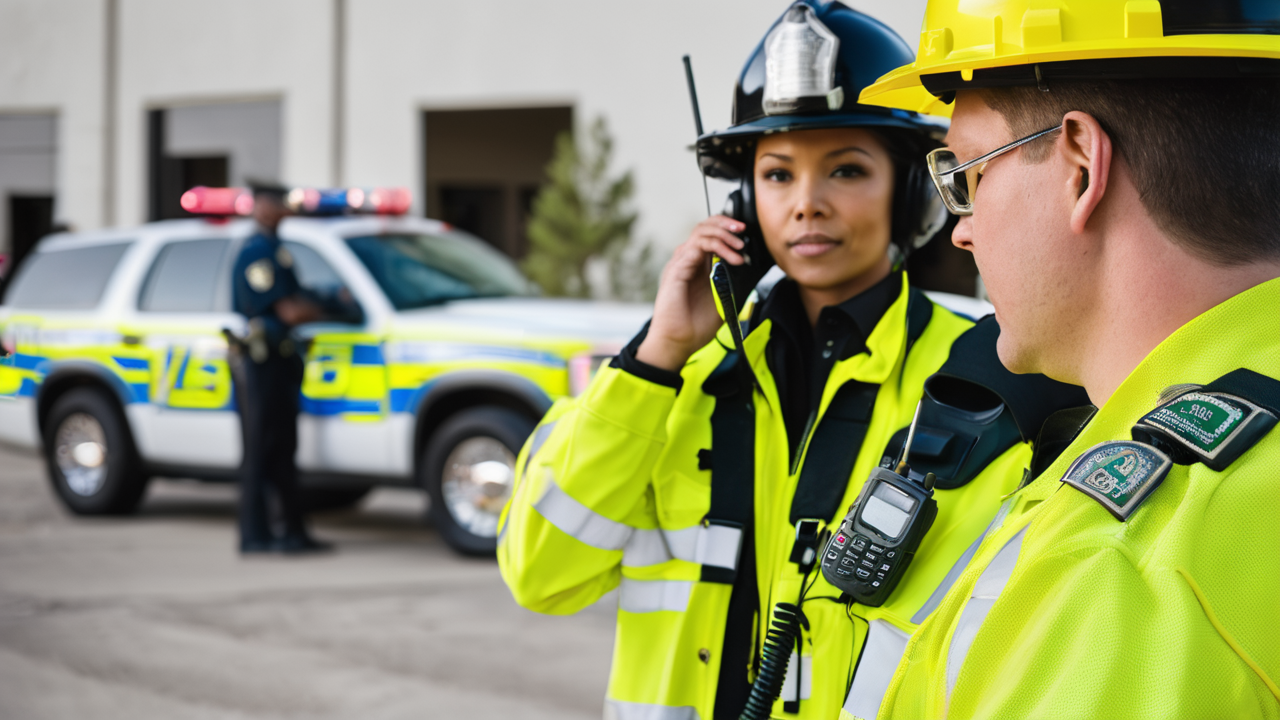The Role of Walkie Talkies in Modern Law Enforcement
The Evolution of Two-Way Radios in the Police Force
Two-way radios have come a long way in law enforcement. They started as bulky devices with limited range. Now, they are compact and powerful tools. Modern walkie talkies offer clear audio and long-range communication. They also have features like GPS tracking and emergency alerts.

These radios have become essential for police work. They allow officers to stay connected in various situations. From routine patrols to high-risk operations, radios keep the force coordinated. The evolution of this tech has greatly improved police efficiency and safety.
Benefits of Using Walkie Talkies for Law Enforcement
Walkie talkies offer many advantages for police officers. They provide instant communication, which is crucial in emergencies. Officers can quickly call for backup or relay important information. This speed can be life-saving in dangerous situations.
These devices also improve coordination among team members. During large operations, they help maintain a clear chain of command. Walkie talkies are portable and hands-free, allowing officers to move freely. They work in areas where cell phones might fail, ensuring constant contact.
Challenges and Solutions in Two-Way Radio Adoption
Adopting new radio systems can be challenging for police departments. One issue is the cost of upgrading equipment. Another is training officers to use new features effectively. There can also be resistance to change from those used to older systems.
To overcome these challenges, departments can take a phased approach. They can introduce new radios gradually and offer thorough training. Demonstrating the benefits of new features can help gain officer buy-in. Departments should also seek funding options to manage costs.
Key Features of High-Quality Walkie Talkies for Police
Durability and Reliability in Tactical Environments
Police walkie talkies must be tough and reliable. They should withstand drops, impacts, and extreme weather. High-quality radios are often water-resistant or waterproof. This ensures they work in rain or during water-related incidents.

Dust and shock resistance are also crucial features. Radios should have clear audio even in noisy environments. Reliable push-to-talk buttons are essential for quick communication. Some models offer noise-canceling tech for better clarity in chaotic scenes.
Battery Life and Power Efficiency for Shift Workers
Long battery life is vital for police radios. Officers need devices that last through entire shifts. Many modern walkie talkies offer 12 to 24 hours of use on a single charge. Some have replaceable batteries for extended operations.
Power-saving features help extend battery life. These include adjustable power settings and sleep modes. Quick-charging capabilities are also important. This ensures radios are ready for the next shift with minimal downtime.
Interoperability with Other Radio Systems
Interoperability is key for effective police communication. Radios should work across different agencies and departments. This is crucial during joint operations or large-scale emergencies.
Many modern walkie talkies support multiple frequencies and protocols. Some can switch between digital and analog modes. This flexibility allows seamless communication with various systems. It's essential for coordinating with fire departments, EMTs, and other services.
Best Practices in Implementing Walkie Talkies in the Police Department
Developing a Robust Communication Plan
A solid communication plan is crucial when implementing new walkie talkies. This plan should outline how and when to use the radios. It should define clear channels for different types of communication.

The plan must include protocols for emergencies and routine operations. It should also address how to handle sensitive information over the radio. Regular reviews and updates of this plan ensure it stays effective as needs change.
Training Officers on Radio Etiquette and Protocols
Proper training is essential for effective radio use. Officers should learn basic radio etiquette and clear communication. This includes using proper call signs and keeping messages brief and clear.
Training should cover all radio features and when to use them. Officers need to know how to switch channels and use emergency functions. Role-playing exercises can help practice these skills in realistic scenarios.
Evaluating the Impact of Radios on Police Performance
Regular evaluation of radio usage is important. Departments should track how walkie talkies affect response times and officer safety. They can gather feedback from officers on the radios' effectiveness.
Data on radio usage patterns can reveal areas for improvement. This might include identifying dead zones or common communication issues. Regular assessments help ensure the radios meet the department's evolving needs.
In conclusion, advanced walkie talkie technology greatly enhances police operations. It improves communication, coordination, and officer safety. With proper implementation and training, these tools can significantly boost law enforcement effectiveness.


